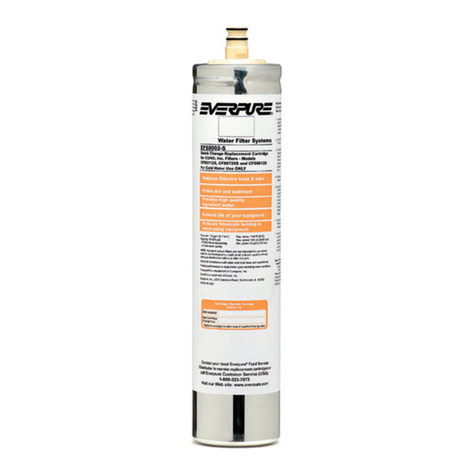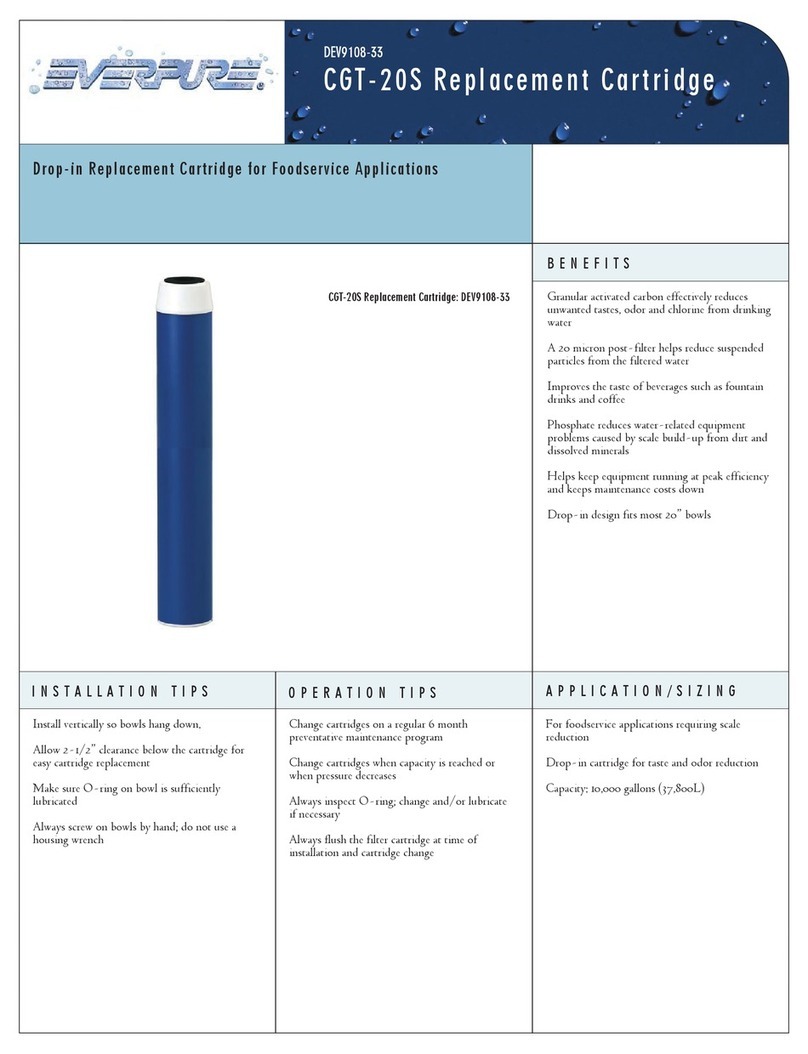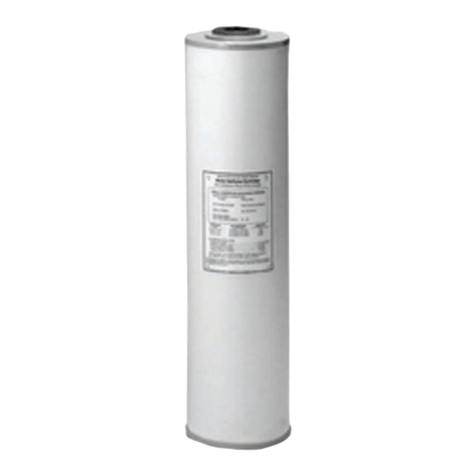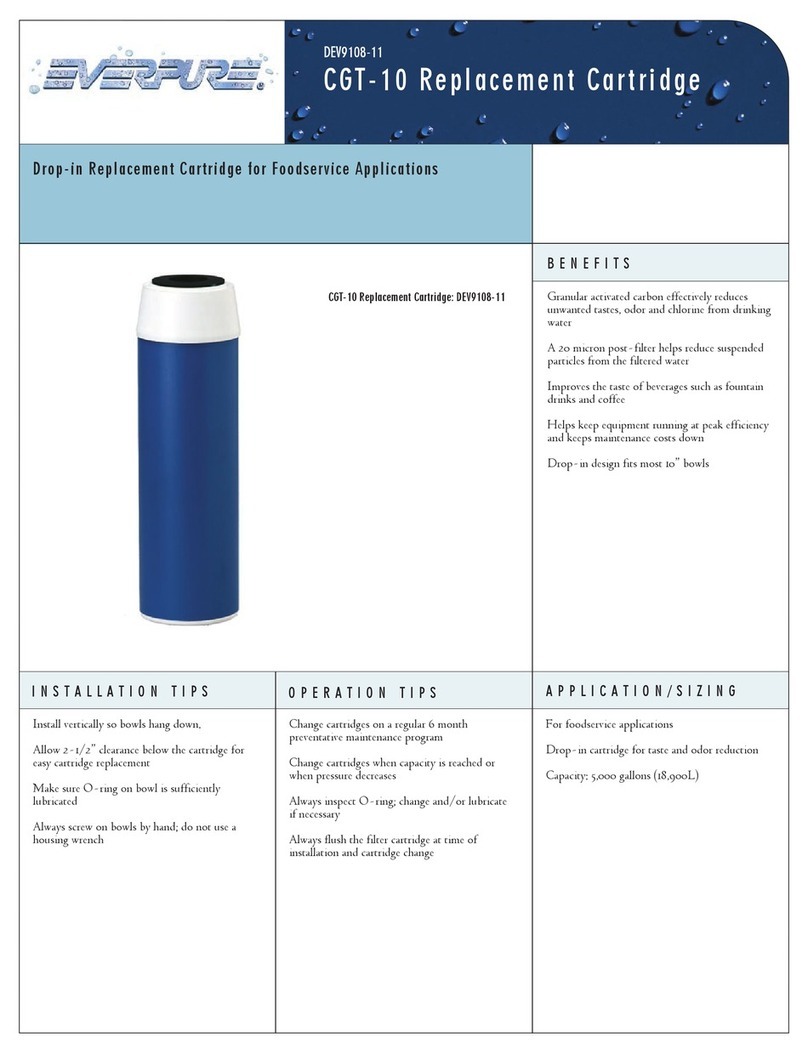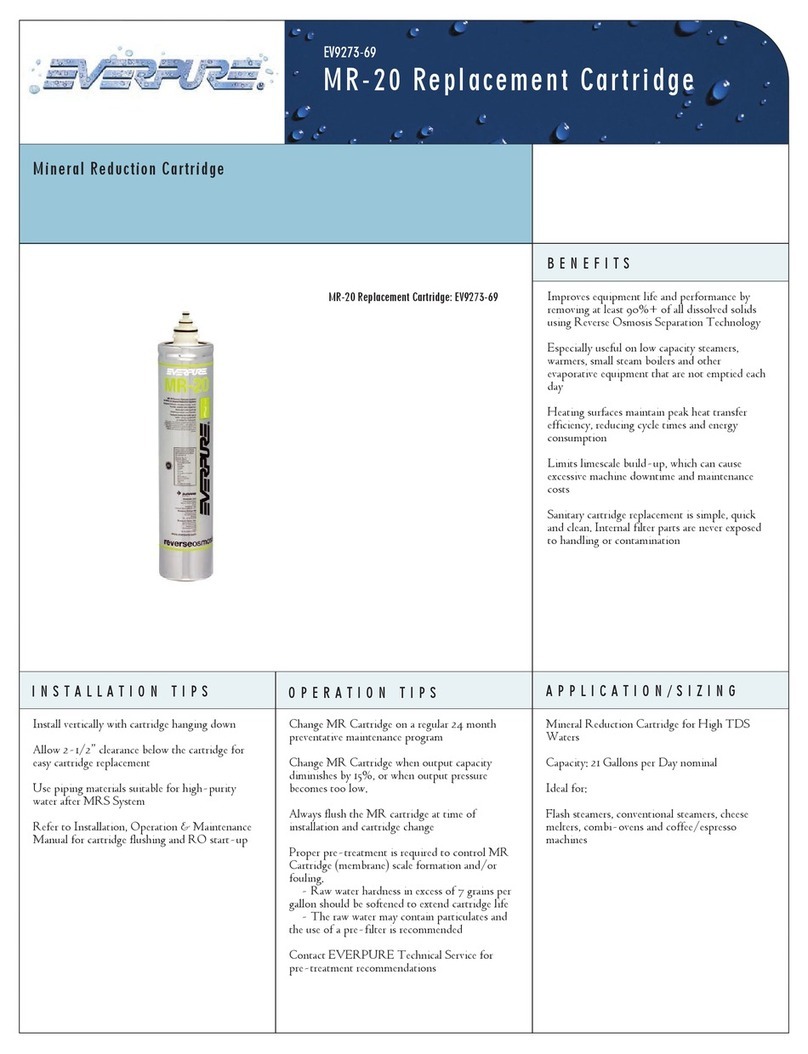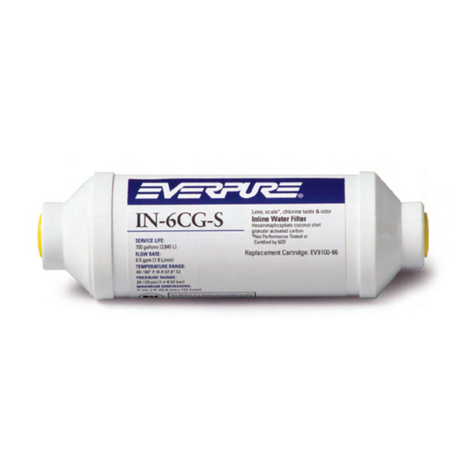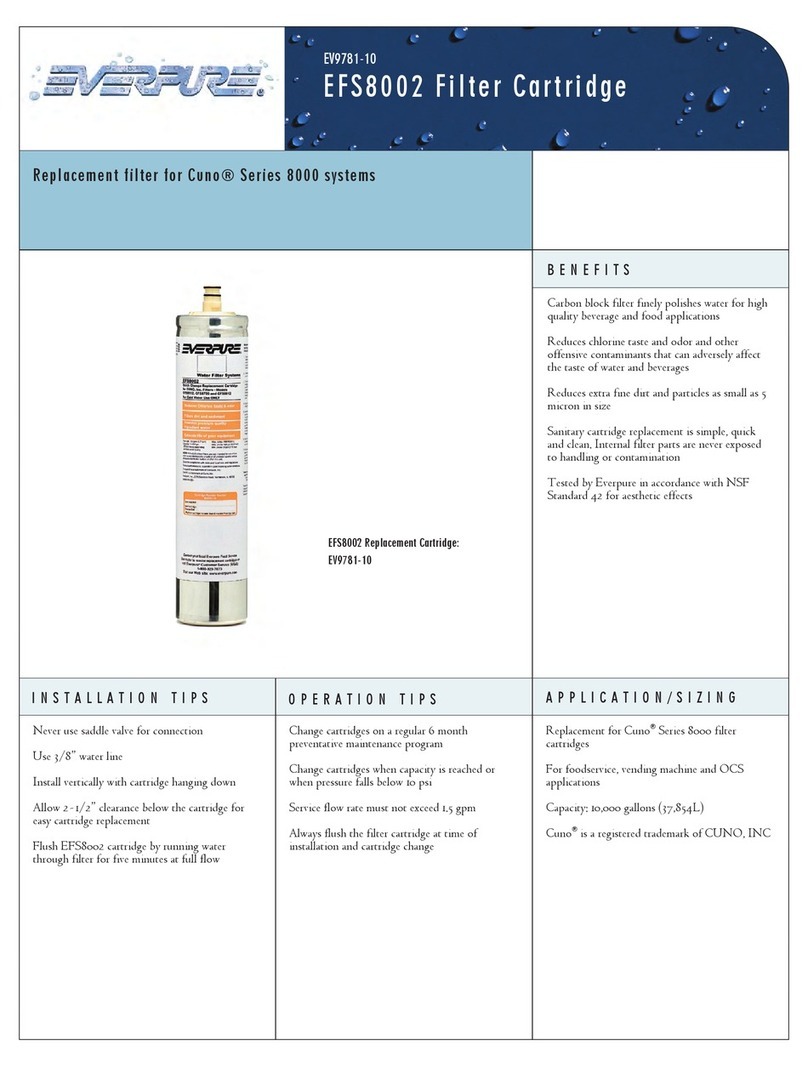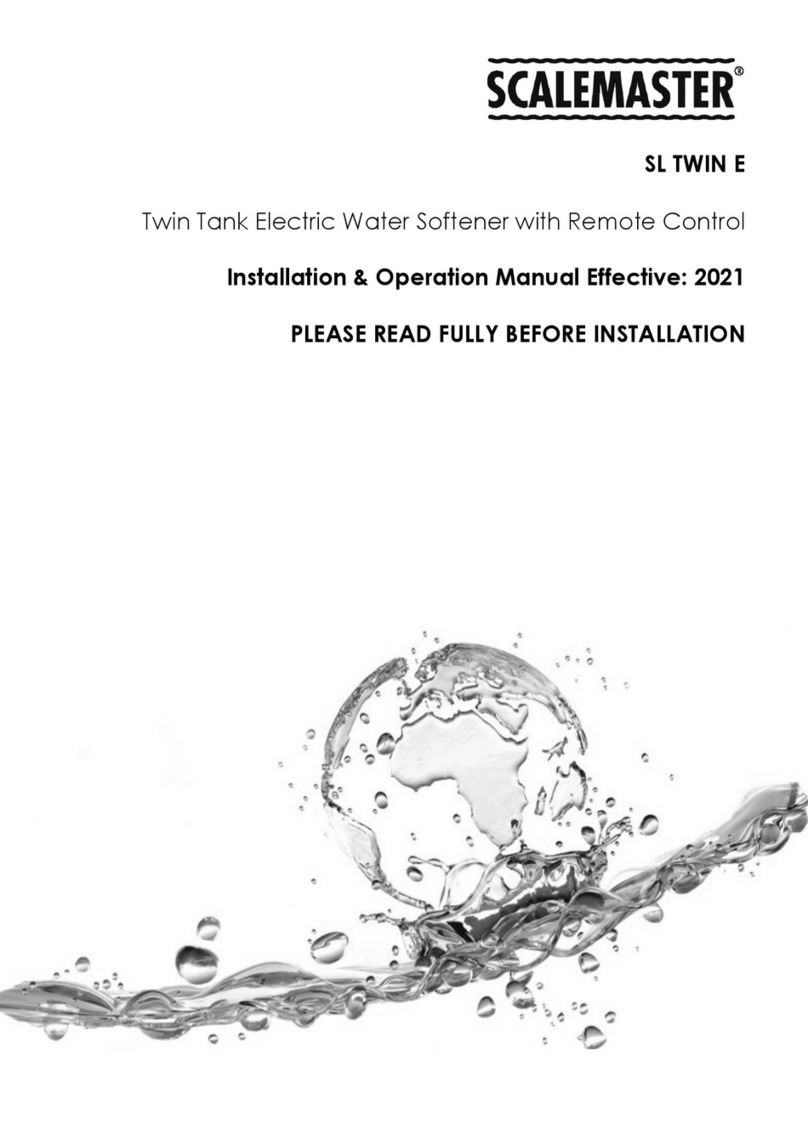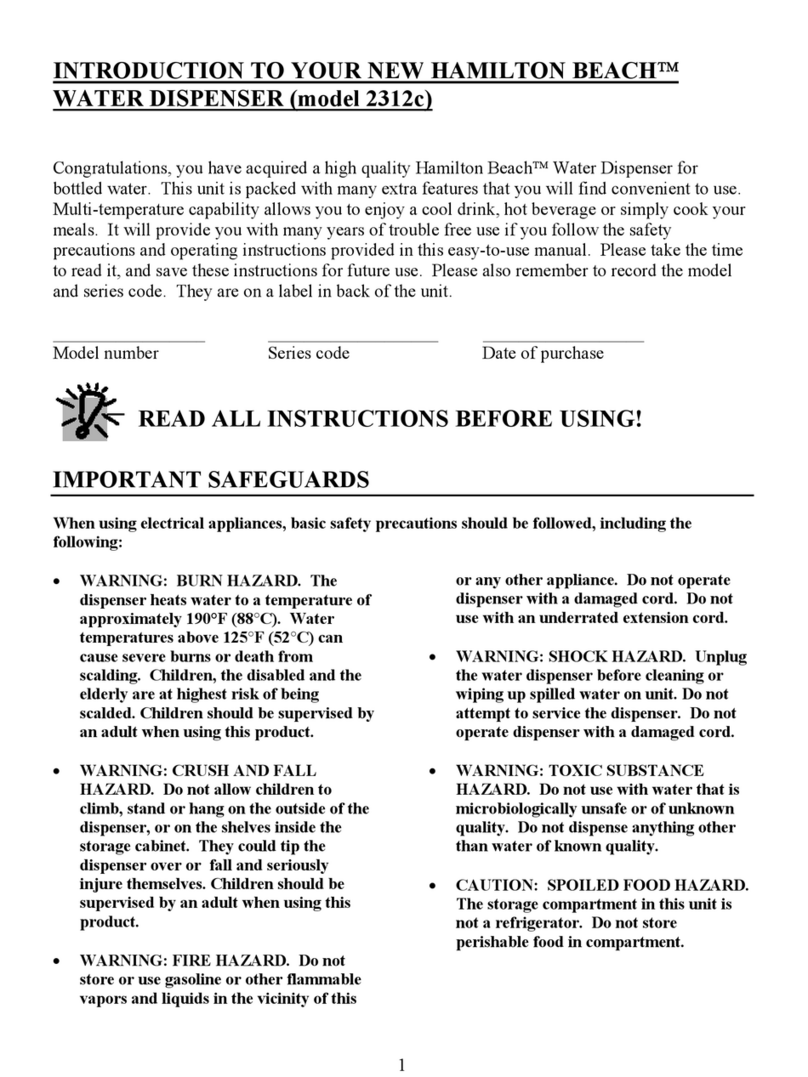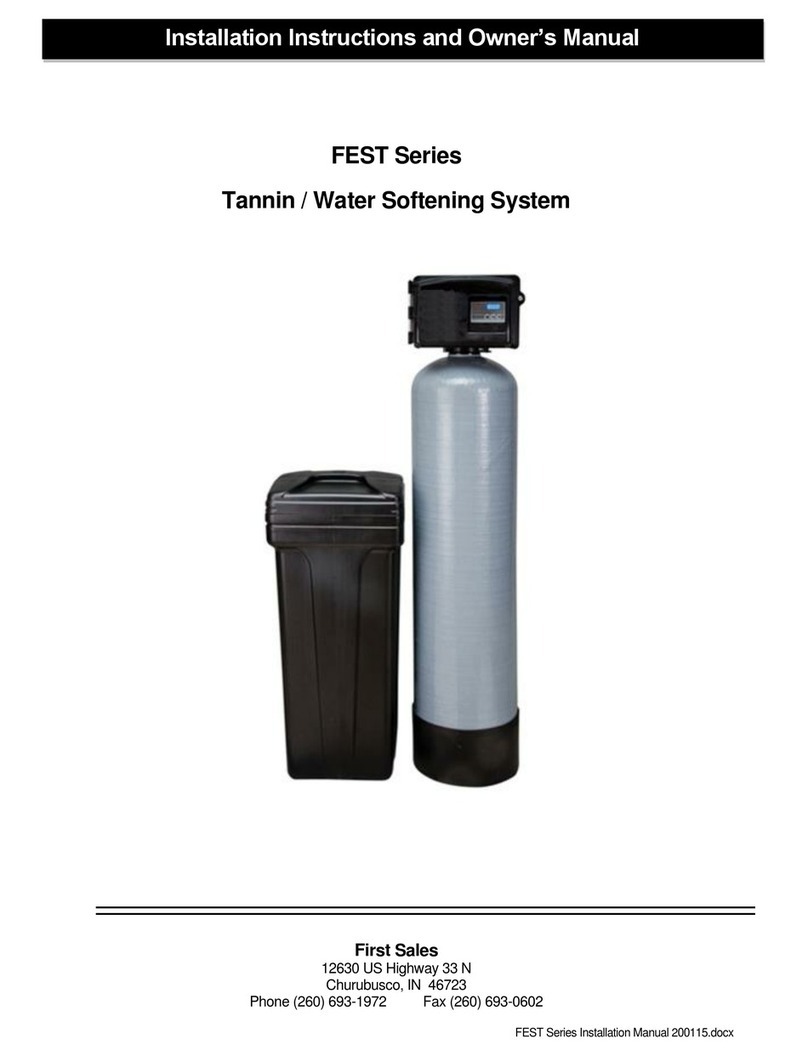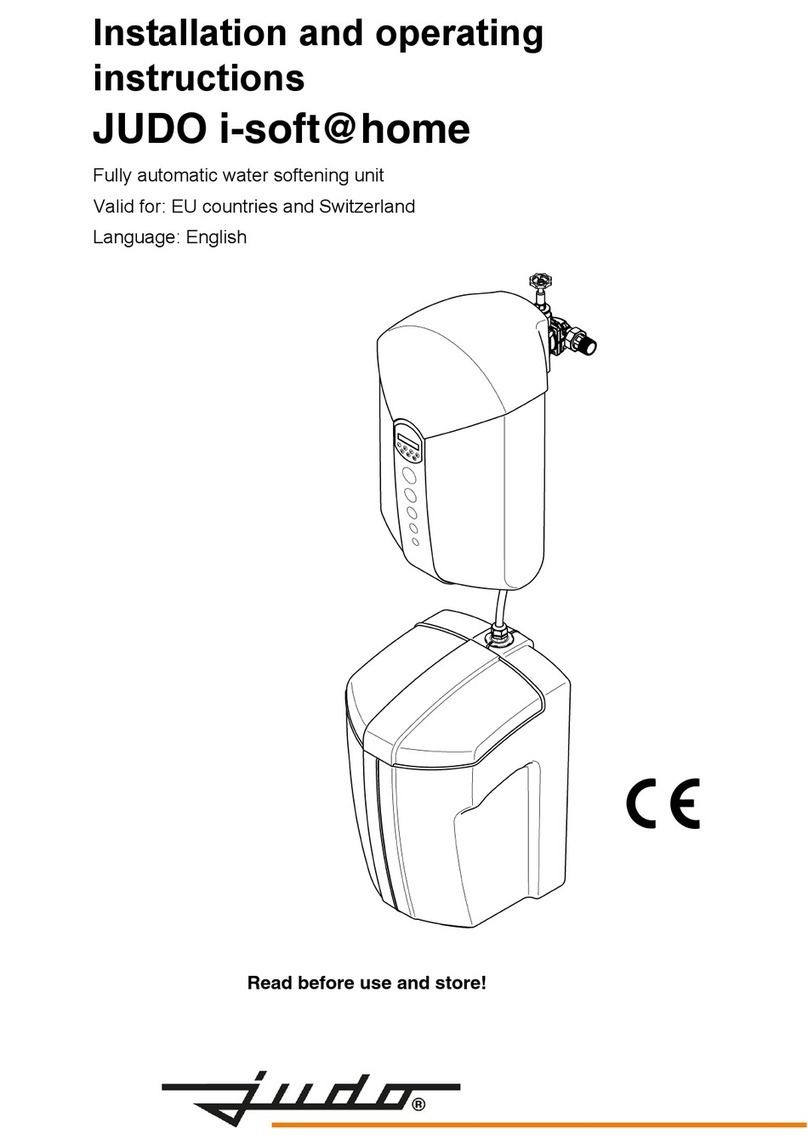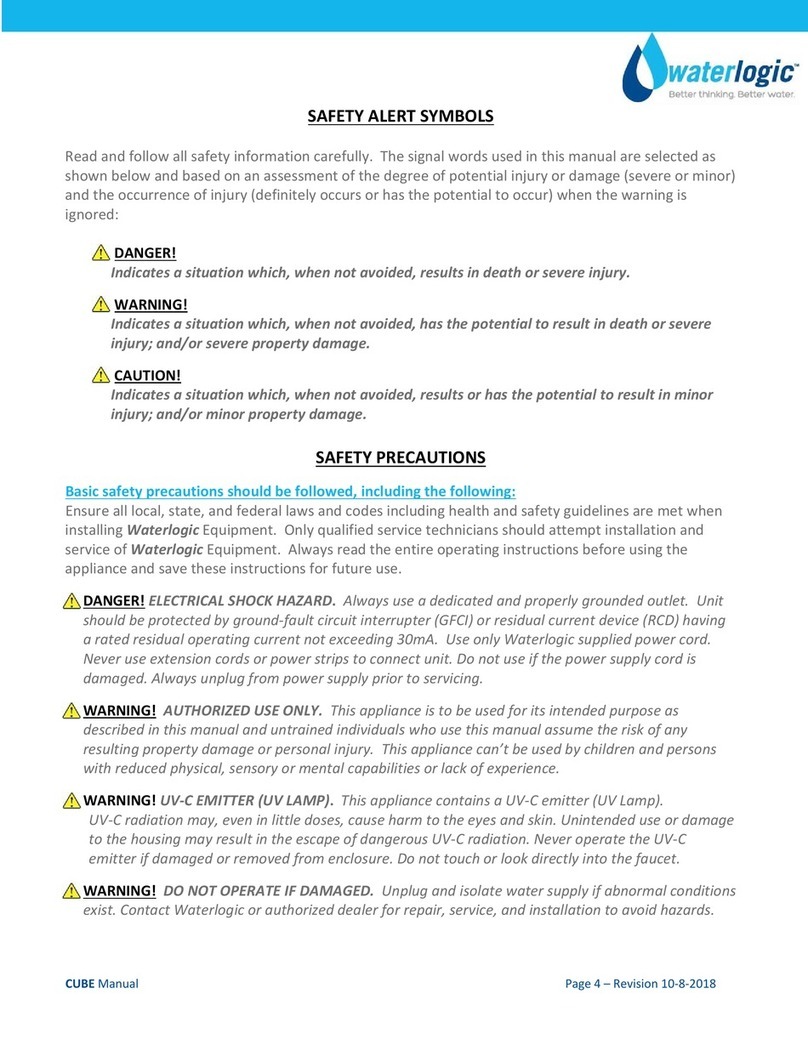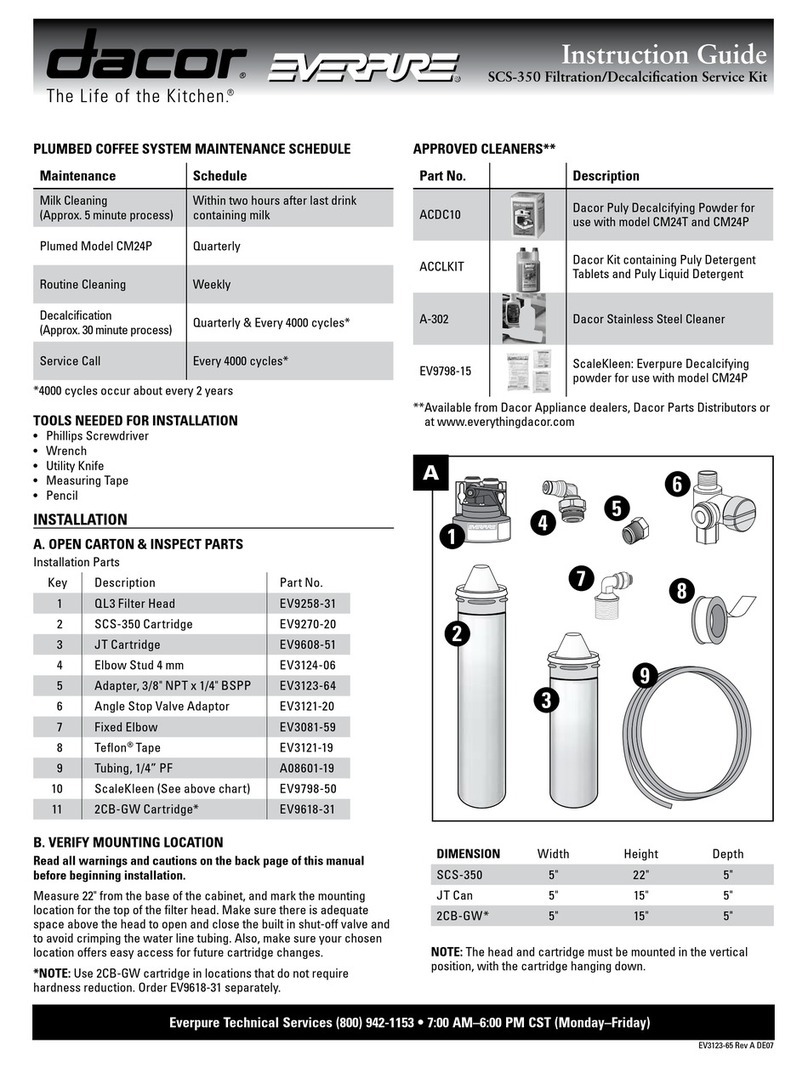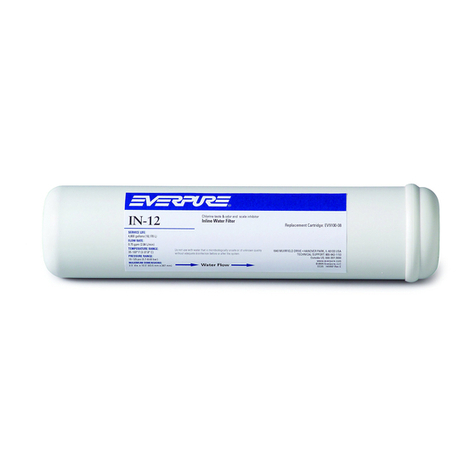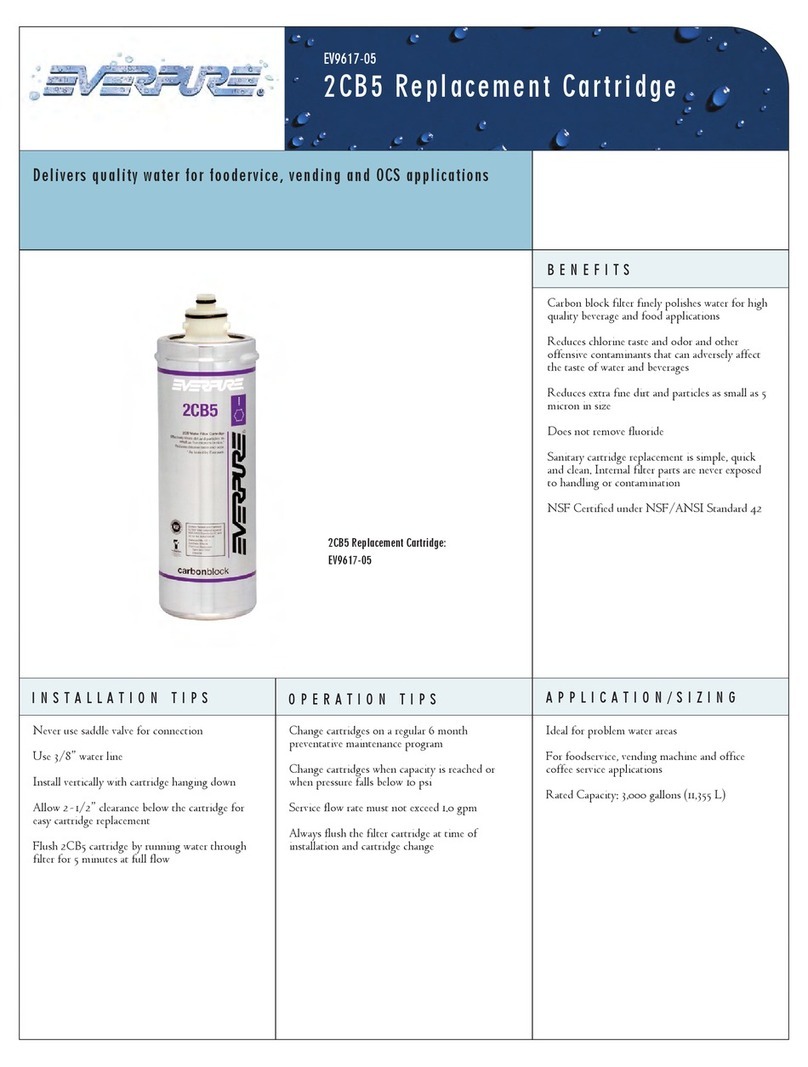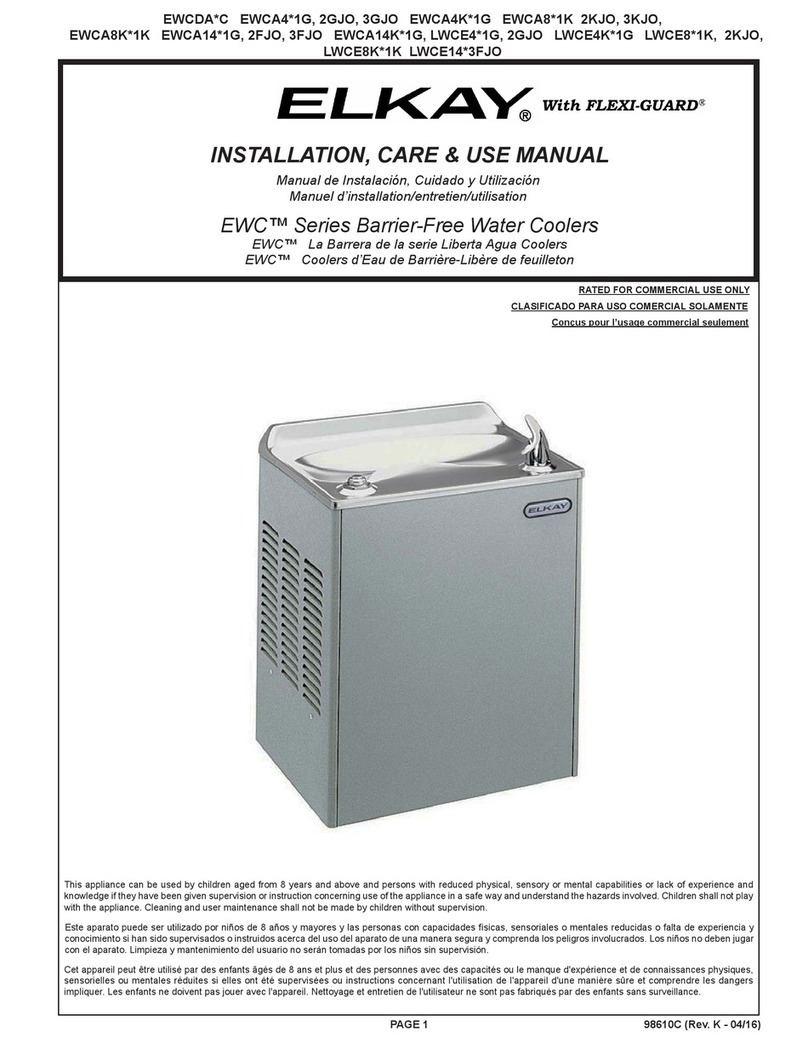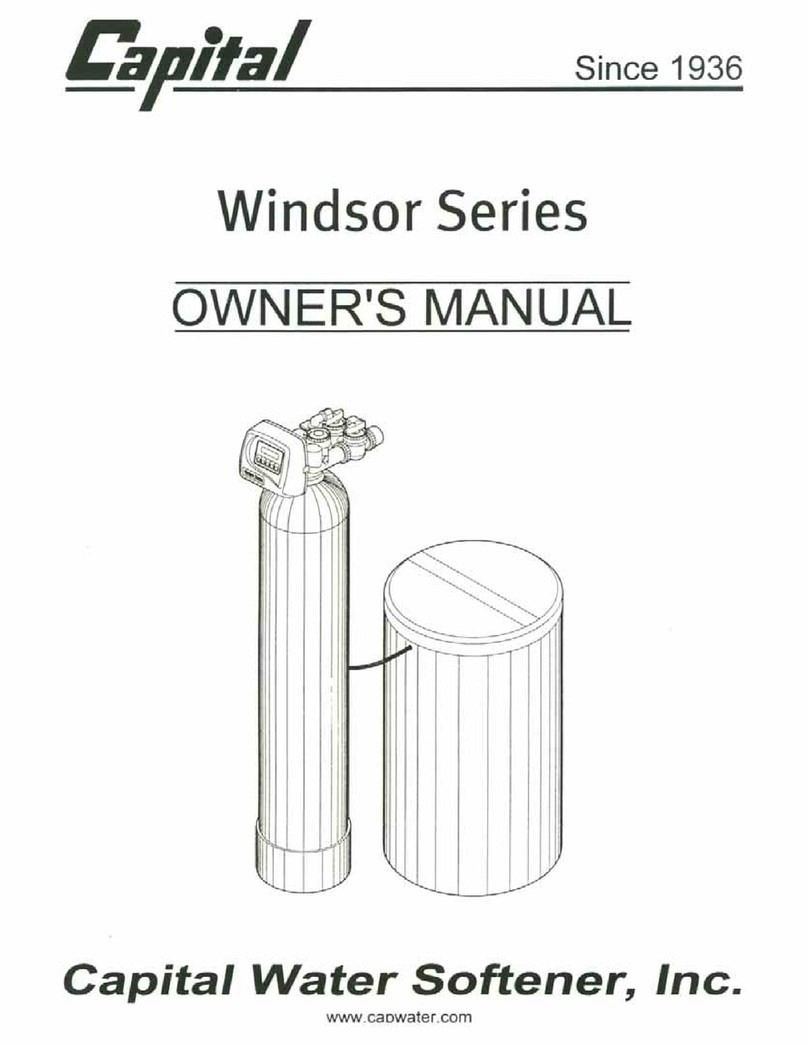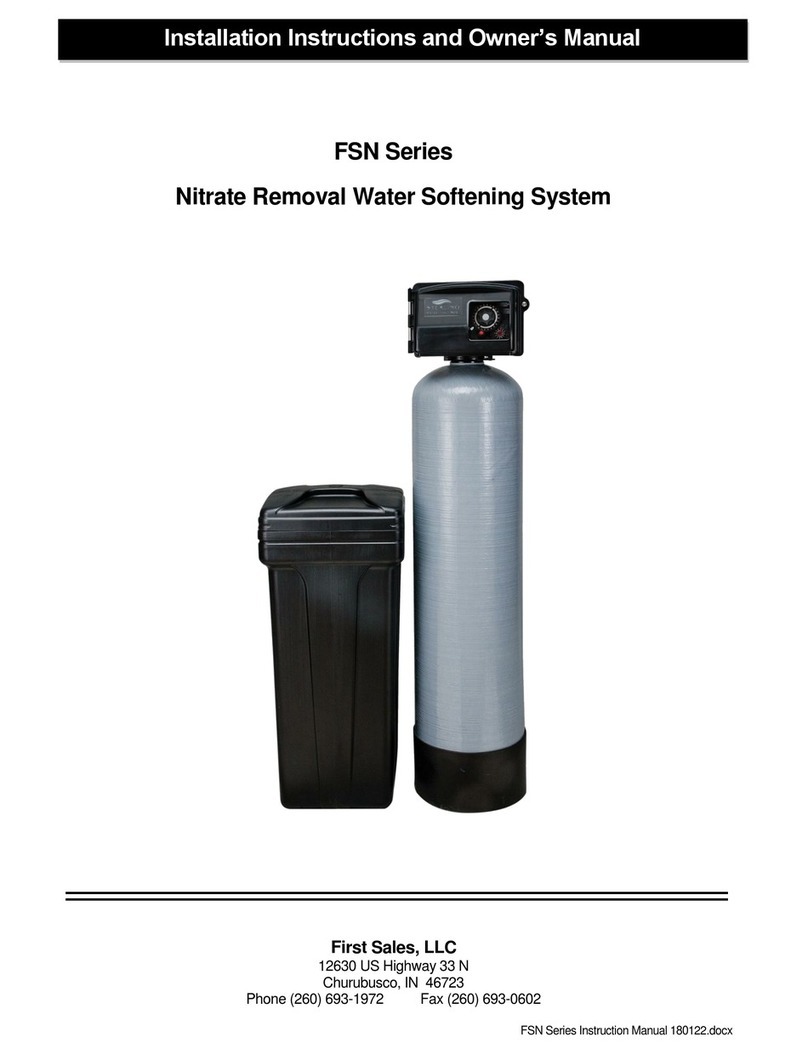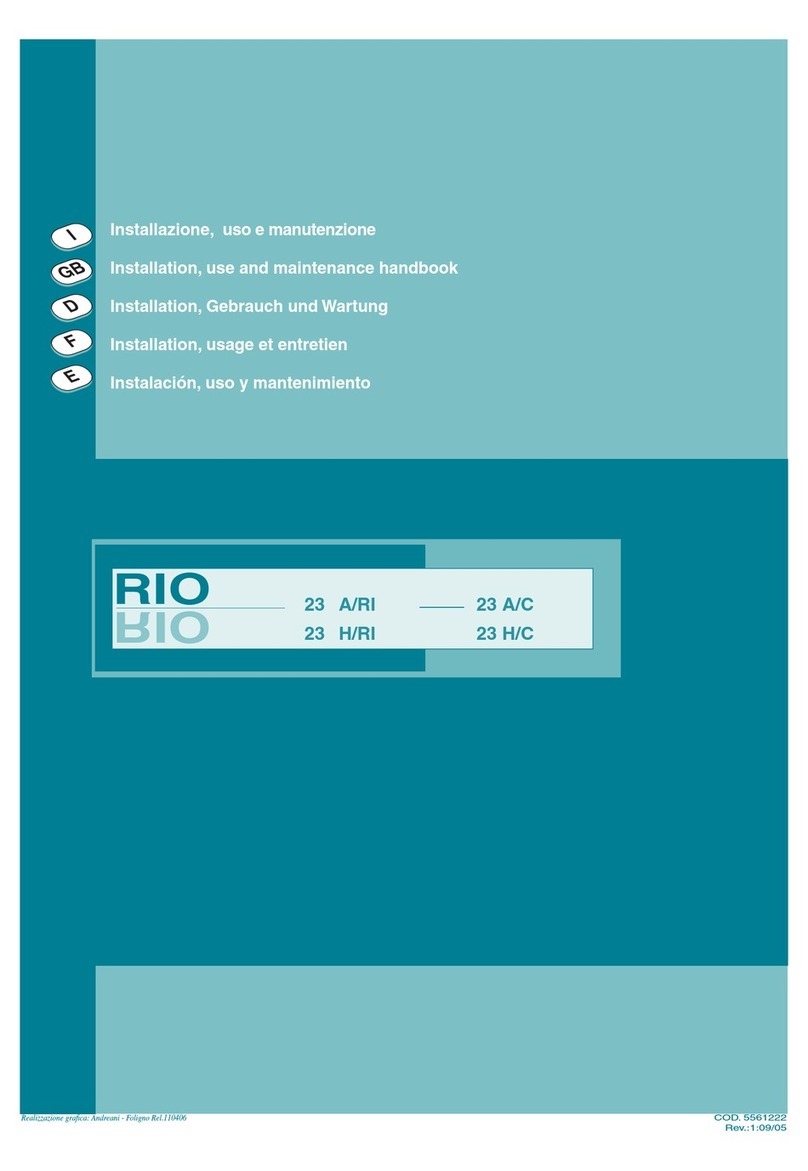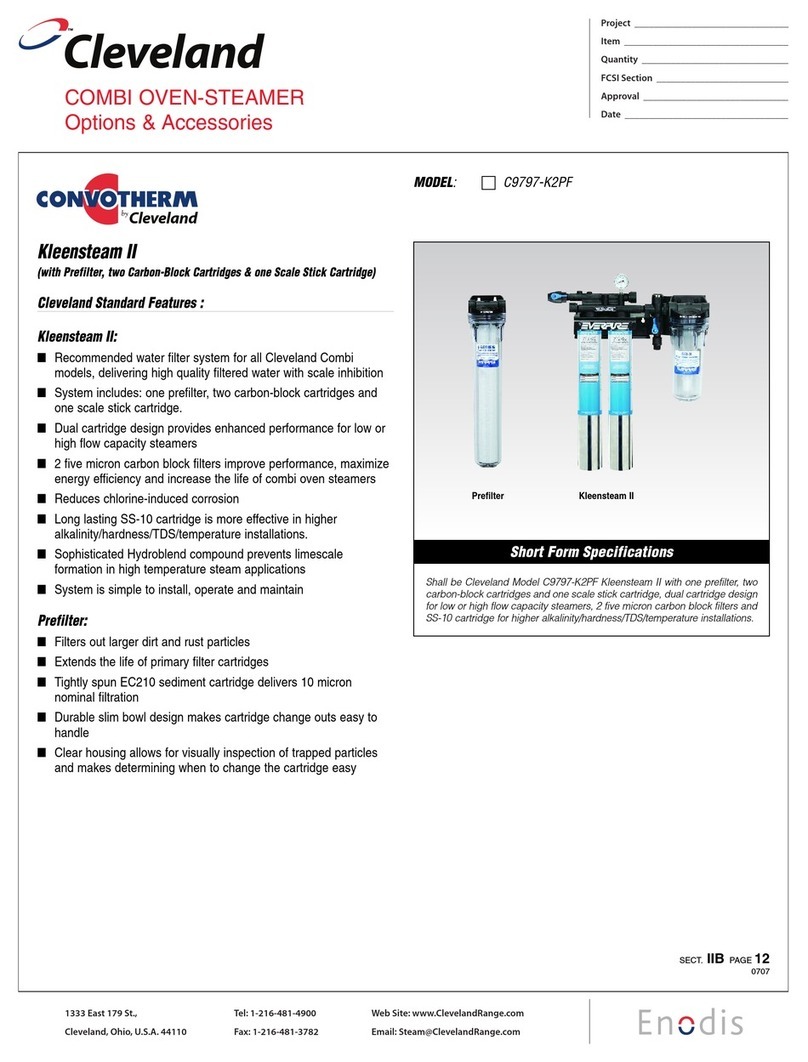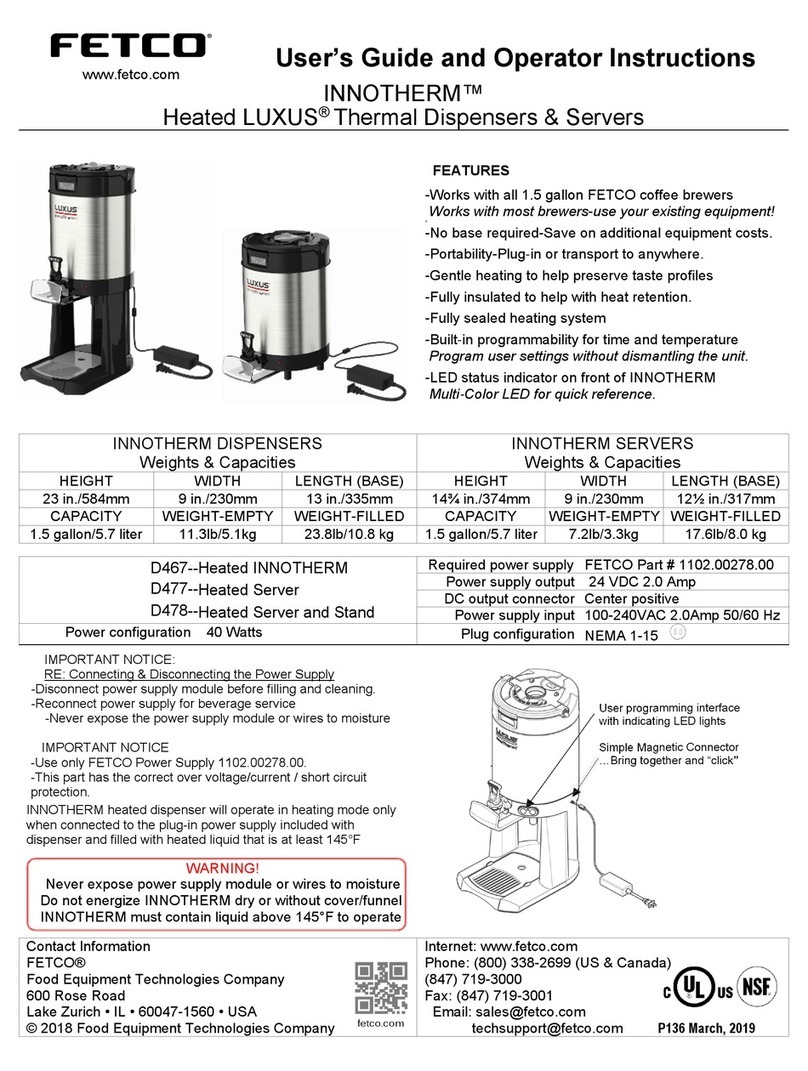
4
Refer to Reject to Drain, Maximum under RO
Production in the Performance Table (page 5) to determine the
maximum gallon per minute waste flow rate. Verify drain has ample
capacity for this waste flow, plus all other sources of waste flow
sharing this drain.
Electrical Connections
The system is pre-wired at the factory. Verify that your supply
voltage matches the primary voltage on the transformer dataplate.
Available voltages are 115, 230 & 240 VAC. A ground fault protected
circuit rated at 10 Amps minimum is required. Plug-in power cord
when instructed to do so in the following section.
CARTRIDGE INSTALLATION AND ACTIVATION
Remove the outer shrink-wrap and protective closure from the1.
pre-filter (optional), TO, RO (MR) and CC cartridge (optional) or BW
4400 cartridge (optional).
If the optional Pre-filter has been supplied, go to step to 3. If not2.
supplied, go to step 4.
Locate the sump (clear bowl) for the pre-filter housing. Install the3.
pre-filter cartridge into the sump. Locate the O-ring in the small
parts pack. Lightly lubricate this O-ring with a food grade lubricant
and install it into the groove in the sump. Install the sump with pre-
filter and O-ring into the pre-filter head. Use the sump wrench to
tighten the sump securely.
Install the TO cartridge into the TO head (left-hand), following the4.
instructions on the cartridge.
Slowly open the inlet supply valve. Position a bucket underneath5.
the RO cartridge head (center) to collect the water. Apply power to
the system by plugging the power cord into the receptacle. Within
moments, water should begin to spill out of the RO head and into
the bucket. Carbon fines and air will be flushed out of during
this time. Flush until water runs clear (2-3 minutes typically). If
the bucket requires emptying, un-plug the power cord from the
receptacle to stop the flow, then empty the bucket. Reposition the
bucket and repeat the flushing operation as required. Once the
TO cartridge has been flushed, un-plug the power cord from the
receptacle.
Install the RO cartridge into the RO head, following the6.
instructions on the cartridge.
If the optional 7CC-BW or BW 4400 cartridge has been supplied,7.
go to step to 8. If not supplied, go to step 9.
Remove the plug from the 7CC-BW/BW 4400 cartridge head8.
(right-hand). Install the 7CC-BW or BW 4400 cartridge into the
head, following the instructions on the cartridge. If the optional
7CC-BW has been supplied, go to step to 9. If the optional BW 4400
cartridge has been supplied, open blend valve fully (See figure 5).
Go to step to 9.
Disconnect the tubing connecting the storage tank to the system9.
at the storage tank and route to a drain temporarily.
Do not use this product water! It may contain a
preservative solution from the RO cartridge and should not be
consumed!
Apply power to the system by plugging the power cord into the10.
receptacle. Within moments, water should begin to exit the
storage tank tubing. If the optional BW 4400 cartridge has been
supplied, close blend valve after 3 minutes. Allow the system to
flush for at least 1 hour or until 5 gallons (18.9 l) of product water
has been produced. Un-plug the power cord. Re-connect the
tubing to the storage tank.
DISINFECTION
When flushing is complete, the storage tank and associated piping
must be disinfected, and then completely flushed. The steps for this
are outlined below.
Locate the 3/8" (9.5 mm) OD tubing that connects to the storage1.
tank. Disconnect the end which connects to the fitting at the
processor. Measure 1 ounce (29.6 ml) of 5.25% bleach for every 7.5
gallons (28.4 l) of storage tank capacity. Pour this volume of bleach
into the tube that leads to the storage tank. Re-connect this tube
to the fitting. Apply power to the system by plugging the power
cord into the receptacle. The booster pump should begin to run
and fill the storage tank.
Once sufficient water has entered the storage tank (more than 1/42.
full), demand treated water from at least one piece of equipment the
MRS is supplying water to. Once all of the air has been purged, and
a solid flow of water is observed, stop the flow at the connected
equipment. Purge the air from all remaining pieces of connected
equipment by demanding water from each one individually.
Allow the storage tank to fill until the booster pump turns off.3.
Allow the chlorinated water to remain in the storage tank and
distribution piping for 10 minutes.
Un-plug the power cord. Drain the storage tank by demanding4.
water downstream and allow the storage tank to drain. Once the
storage tank is empty, stop demanding water downstream.
Apply power to the system by plugging the power cord into the5.
receptacle. Once sufficient water has entered the storage tank
(more than 1/4 full), demand treated water from at least one piece
of equipment the MRS is supplying water to. After 5 minutes,
stop the flow at the connected equipment. Flush the lines to each
remaining piece of connected equipment by demanding water from
them for 2 minutes each.
Allow the storage tank to fill until the booster pumps turns off.6.
Un-plug the power cord. Drain the storage tank by demanding7.
water downstream and allow the storage tank to drain. Once the
storage tank is empty, stop demanding water downstream
Repeat steps 5-7 until no residual chlorine odor is detected from the8.
water exiting the storage tank drain valve or connected equipment.
BLEND VALVE ADJUSTMENT - BL MODELS ONLY
A blend valve (below pump) and sample valve (on right-side of
processor where tank connects) have been provided to adjust and
measure the TDS level of the treated water. Adjustment should be
made when the system is processing water, and the storage tank is
isolated. When making adjustments, allow the line to flush briefly
after an adjustment is made, collect a 16 oz. (473 ml) sample, then
measure the TDS with a calibrated TDS meter. Close the blend valve
to reduce the TDS, open it to increase the TDS. See figure 5 for
blend valve location.
PLACING THE MRS INTO SERVICE
Once the cartridges have been activated, the storage tank &
distribution piping sanitized, the MRS can be placed into service.
During normal operation, the valves on the MRS should be in the
following positions:
System inlet and outlet valves – openA.
System by-pass valve – closed.B.
Once the system been started-up initially, it is a good idea to
measure the outlet water flow rate and quality to verify the system’s
performance. The initial values should be recorded for future
comparison to detect any changes in performance. A Performance
Log has been provided on Page 6 to record this information.
PRESSURE SWITCH ADJUSTMENT
The on-off operation of the system is controlled by a pressure
switch. The factory setting is approximately 25 psi (1.7 bar) ON - 40
psi (2.8 bar) OFF. A 5/64” (2 mm) hex key can be used to adjust the
pressure setting. Clockwise rotation of the hex screw increases the
operating pressure and counter-clockwise rotation decreases the
operating pressure. See Figure 5.
Whenever making adjustments to the pressure switch, check the system
ON-OFF operation and adjust the storage tank pre-charge as needed.
The storage tank pre-charge pressure should always be less than
the system turn-on pressure - typically 2-5 psi (0.14-0.34 bar) less.
Example: 25–40 psi (1.7–2.8 bar) system on-off pressure, 20 psi (1.38
bar) tank pre-charge pressure.










